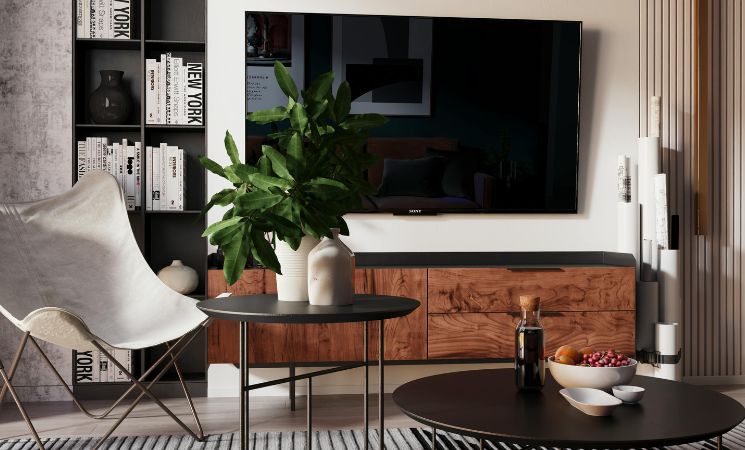Living in Crescent City, CA, means having a lifestyle that feels connected to nature and a slower, more peaceful pace. Surrounded by breathtaking coastal views and towering redwoods, it’s easy to imagine life here being as serene as the scenery. However, even in such a beautiful place, clutter has a way of creeping back into homes, no matter how many times it’s been cleared away.
This problem is not unique to Crescent City; it’s a common issue for many households. Despite our best intentions, clutter often reappears due to overlooked habits and practical challenges. Understanding the reasons behind this recurring issue is the first step toward creating a clutter-free space that complements the calm and beauty of your lifestyle.
Let’s discuss this further below:
Lack of Proper Storage Solutions
One of the biggest culprits behind recurring clutter is the absence of effective storage solutions. When there isn’t a designated place for every item, belongings tend to accumulate on countertops, tables, and other random surfaces. Over time, these small piles grow into bigger messes, and it becomes harder to keep a tidy home. This issue often arises in homes with limited closet space or poorly planned storage areas, leaving homeowners frustrated with the constant battle against clutter.
For those living in Crescent City, there’s a practical way to tackle this problem. The options for storage Crescent City CA facilities offer can be a game-changer for managing overflow items or storing seasonal belongings. These facilities provide a secure and accessible option for items you don’t need every day but want to keep safe and organized. Moving rarely used items to storage frees up valuable space in your home and makes it easier to keep things neat and under control.
Holding onto Too Many Unnecessary Items
Many people struggle with letting go of things they no longer need, which is another major reason clutter keeps coming back. Sentimental attachment often plays a role, as does the “just in case” mindset that makes it hard to part with items that might be useful someday. Unfortunately, holding onto too many unnecessary things can create a chaotic environment.
Tackling this issue starts with a fresh perspective. A good approach is to evaluate each item and ask whether it’s adding value to your life or taking up space unnecessarily. Methods like the “one-year rule” can help you decide—if you haven’t used something in the past year, it might be time to let it go. Regular decluttering sessions can help prevent the build-up of unwanted items and make it easier to maintain a clean and organized space.
Lack of Consistent Habits for Staying Organized
Clutter often reappears because small tasks are left undone, creating a snowball effect over time. Leaving mail on the counter, not putting shoes back in their place, or skipping a quick tidy-up at the end of the day may seem harmless at the moment but can lead to larger messes later. Without consistent habits, even a well-organized home can quickly fall into disarray.
Developing simple daily routines can make a big difference in keeping clutter at bay. Taking just 10-15 minutes a day to put things back where they belong or sort through high-traffic areas like kitchen counters can prevent small messes from turning into overwhelming clutter. Involving everyone in the household in these habits helps create a team effort to maintain a tidy and organized living space. Consistency is key to breaking the cycle of clutter.
Over-buying and Impulse Purchases
Another common reason clutter reappears could be because you keep buying more than what is needed or succumbing to impulse purchases. Online shopping and frequent sales make it easy to add items to your home without much thought. Over time, these small acquisitions pile up and create unnecessary clutter that crowds your living space.
The solution lies in adopting mindful shopping habits. Before making a purchase, consider whether the item has a specific purpose or long-term value in your life. Creating a shopping list and sticking to it can also help cut down on unnecessary buys. Additionally, regular decluttering can reveal items you no longer use, encouraging a more intentional approach to future purchases.
Spaces Used Ineffectively or Not Fully Optimized
Clutter often thrives in areas of the home that are poorly organized or underutilized. Closets, attics, garages, and other storage spaces can become dumping grounds when they lack an organized system. Items are tossed in without thought, making these areas hard to navigate and leaving them full of forgotten belongings. In turn, this causes frustration and a tendency to buy duplicates of items you already own but can’t locate.
Making better use of these spaces can significantly reduce clutter. Start by categorizing and sorting items, then invest in storage solutions like shelves, bins, and hooks to create a clear organizational structure. Label containers so that everyone in the household knows where things go. Regularly revisiting these spaces helps prevent them from turning into clutter zones again. When every item has a designated place, it becomes easier to maintain an orderly home.
Clutter from Unfinished Projects
Unfinished projects are another common source of recurring clutter in many homes. Items like craft supplies, tools, or paperwork related to incomplete tasks often get left out and take up valuable space. These projects can linger for weeks, months, or even years, creating visual and physical clutter that makes your home feel disorganized. The longer they sit unfinished, the harder it becomes to tackle them, adding to the mess and frustration.
A proactive approach can help overcome this issue. Start by assessing each unfinished project and deciding whether it’s still worth completing. For projects you plan to finish, designate a specific area to store the materials neatly until you can dedicate time to them. Set realistic deadlines to avoid procrastination and focus on completing one project at a time. For those that no longer serve a purpose or bring you joy, consider letting them go to free up space and mental energy. This strategy helps clear lingering clutter and creates a more harmonious living environment.
Clutter reappears for various reasons, from insufficient storage and overbuying to inconsistent habits and ineffective use of space. Maintaining a sense of calm at home requires tackling these underlying causes. Solutions like using storage facilities, adopting mindful shopping practices, and optimizing spaces can make a significant difference. With a little effort and regular attention, it’s possible to break the cycle of clutter and create an environment that reflects the peaceful beauty of your humble abode. Small changes can lead to big results, making your home a space of comfort and simplicity.














